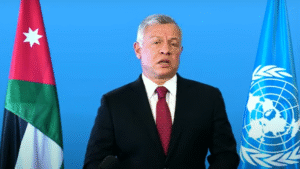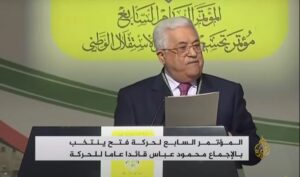Recent reports from security forces indicate that over 1.7 million Palestinians in the Gaza Strip have been displaced, marking the highest number in the history of the Jewish-Arab conflict.
The Hamas-led actions are viewed by many residents of the Gaza Strip as a new Nakba, reminiscent of the events of 1948.
History seems to be repeating itself, with the Palestinian leadership making grave mistakes in their approach to Israel, resulting in a heavy toll on Palestinian citizens who are now displaced persons or refugees.
Minister Avi Dichter, the former head of the Shin Bet, referred to the recent events in the Gaza Strip as “The Nakba of Gaza 2023.”
When asked about the possibility of Palestinian residents returning to their homes, he expressed uncertainty due to the strategic importance of Gaza City, which sits on a third of the Strip.
The Arabic term “Nakba” translates to a catastrophe or great disaster. Some residents of the Gaza Strip use this term to describe the current conflict, while others use “al-Nuzuch al-Kabir,” meaning the great displacement.
The war in the Gaza Strip is likely to be remembered as the largest displacement or expulsion event of Palestinians since the establishment of the State of Israel.
The IDF’s military power has demonstrated its ability to force large populations to relocate.
Images of tens of thousands of Palestinians marching from the north to the south, waving white flags, will likely be etched into Palestinian national memory for generations.
Palestinians perceive this as a continuation of Israel’s trend to expel them from their land, despite assurances from Israel that the evacuation is temporary.
The truth is that Israel does not seek to permanently expel Palestinians, having withdrawn from the Gaza Strip with no intention of returning.
The current conflict was prompted by Hamas’s actions near the Israeli settlements on the Gaza Strip border.
Palestinians are paying the price for Hamas’s terrorism.
The large-scale evacuation of the northern Gaza Strip increases Israeli deterrence, signaling a willingness to take unusual measures to protect its citizens.
Despite Hamas’s attempts to use residents as human shields, the movement of Palestinians from north to south of Gaza Strip continues through safe passages opened by the IDF.
This failure is a setback for Hamas.
Egypt, expressing dissatisfaction with Israel’s opening of safe passages, views it as a violation of international human law.
There are concerns that this move may lead to pressure from Palestinians on the Gaza-Egypt border.
Israel’s success in emptying the northern Gaza Strip of its inhabitants allows for more targeted operations against Hamas, minimizing harm to civilians and setting a precedent in the fight against terrorism.




